The Colonelís Bequest
The Colonelís Bequest
Mangalore Today News Network
By Dr. Anil Shetty | Photos: Rohit S. Rao
Mangaluru, April 6, 2019: One of Mangalore’s greatest sons, Lieutenant Colonel Vaman Raghunath Mirajkar, was born in 1884. After his early education in Mangalore, he obtained his MBBS degree from Grant Medical College in Bombay in 1913. He later enlisted in the army and did his post graduation in surgery. During World War I he served in France and then Iraq. After the war he served in Afghanistan. In 1924 he went to the UK to do his FRCS. He returned to India in 1934 and worked at the Lahore Medical College.
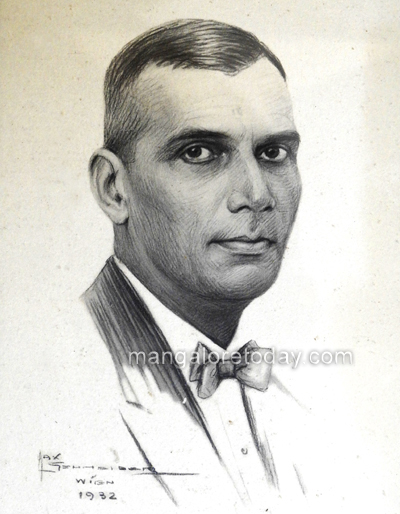
A 1932 pencil sketch of
Colonel Vaman Raghunath Mirajkar
In 1935 a huge earthquake hit Quetta, in Baluchistan. Nearly 60,000 people lost their lives. Colonel Mirajkar was one of the first medical personnel to reach Quetta. For his dedication, service and leadership he was awarded the Order of the British Empire (OBE) by King George V at St James Palace on 19th November 1935. He retired as professor of surgery in 1946. After retirement, Lt Col. Mirajkar had his own practice at Delhi. He was a much sought surgeon and frequently travelled to Bombay and Calcutta to operate on patients. What is remarkable is that he was the President of the Association of Surgeons in India (ASI) in 1945, probably the first Mangalorean doctor to head a national medical association.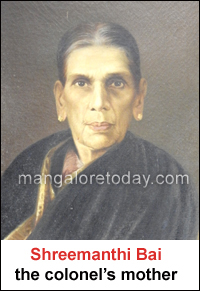 As Mangaloreans, what is much more important is that Lt Col Dr VR Mirajkar left us a legacy. A legacy we have unfortunately neglected and regretfully ignored. Lt Col Mirajkar donated the bungalow he had built, to be used as a museum in memory of his mother. The Shreemanthi Bai Memorial Government Museum or the Mirajkar Museum is the city’s first public museum. The bungalow was built in 1939 and is shaped like a sea faring boat. It is nestled amidst greenery on top of a small hill on the Bejai-Circuit House Road. The house was donated to the department of archaeology in 1955 and was converted into a museum five years later. It was inaugurated by the then Chief Minister of Karnataka, B. D. Jatti. Colonel V. R. Mirajkar died in 1971.
As Mangaloreans, what is much more important is that Lt Col Dr VR Mirajkar left us a legacy. A legacy we have unfortunately neglected and regretfully ignored. Lt Col Mirajkar donated the bungalow he had built, to be used as a museum in memory of his mother. The Shreemanthi Bai Memorial Government Museum or the Mirajkar Museum is the city’s first public museum. The bungalow was built in 1939 and is shaped like a sea faring boat. It is nestled amidst greenery on top of a small hill on the Bejai-Circuit House Road. The house was donated to the department of archaeology in 1955 and was converted into a museum five years later. It was inaugurated by the then Chief Minister of Karnataka, B. D. Jatti. Colonel V. R. Mirajkar died in 1971.
The museum is a vital link to our city’s glorious past. The museum has coins and artifacts donated by Colonel Mirajkar. These include sculptures, coins, paintings and weapons from the 16th and 18th century. Probably the most priceless exhibit is a letter from Mahatma Gandhi to Adolf Hitler! The museum once included a taxidermy section boasting of an excellent collection of stuffed animals and birds, which was a big hit with the kids visiting the museum. The exhibits included a King Cobra and one of the largest specimens of the Royal Bengal Tiger. The state government, in its wisdom, shifted the entire collection of animals to Mysore in 1997, where a museum of natural history was being set up at that time. Mangalore’s loss became Mysore’s gain. Surprisingly, the matter went entirely unnoticed in the local media and not a finger was raised.
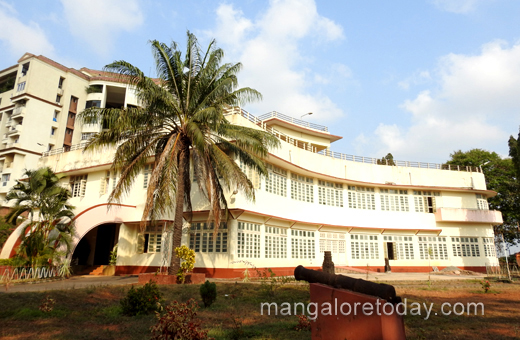
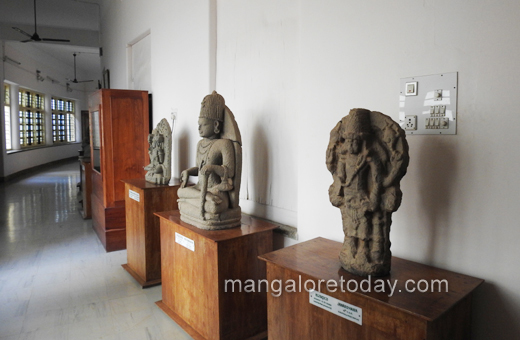
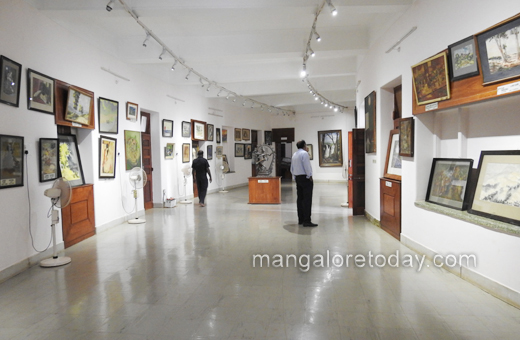
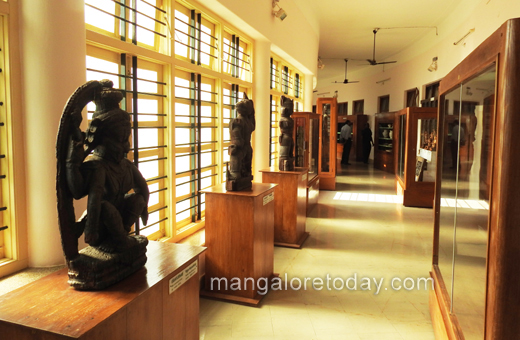
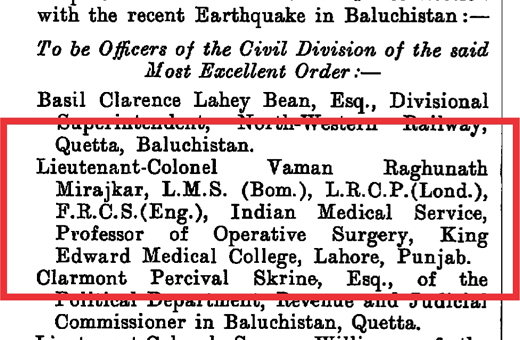
Announcement in the London Gazette about Lt Colonel VR Mirajkar being awarded a knighthood by King George V at St James Court on 19th November 1935
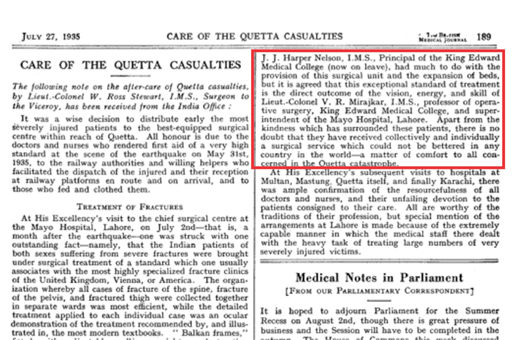
July 27 1935 issue of the BMJ or the British Medical Journal recounting Col. Mirajkar s stellar work and Contributions during the Earthquake in Quetta, Baluchistan
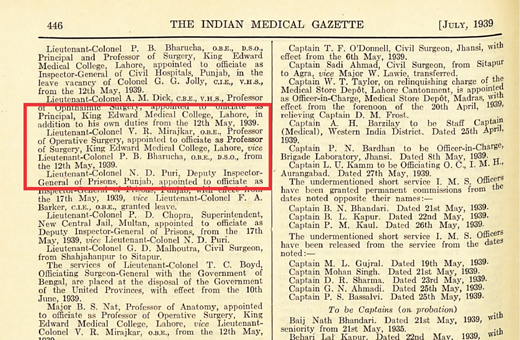
Col. Mirajkar s appointment as Professor of Surgery at King Edward Medical College Lahore, published in the July 1939 issue of the Indian Medical Gazette.
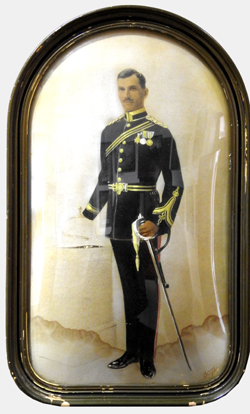 Distressingly we have not made use of Col. Mirajkar’s bequest. We often proclaim our intention to preserve our culture, but how many of us have even visited this museum or motivated anyone to visit it? How many even know of its existence? The museum attracts hardly a dozen visitors a day. It is understaffed and its main exhibits lie there - forlorn, isolated and ignored by the citizens for whom it’s meant. This, while we use every platform on social media and outside in a cacophony of voices, trumpeting our pride and touting our self identity and tribal passions towards our civilization and culture, while conveniently ignoring this proud outpost of our origins, an embodiment and essence of our past.
Distressingly we have not made use of Col. Mirajkar’s bequest. We often proclaim our intention to preserve our culture, but how many of us have even visited this museum or motivated anyone to visit it? How many even know of its existence? The museum attracts hardly a dozen visitors a day. It is understaffed and its main exhibits lie there - forlorn, isolated and ignored by the citizens for whom it’s meant. This, while we use every platform on social media and outside in a cacophony of voices, trumpeting our pride and touting our self identity and tribal passions towards our civilization and culture, while conveniently ignoring this proud outpost of our origins, an embodiment and essence of our past.
This is an impassioned plea to all of you who read this article or who share it. Please do more, much more. Tell your friends, tell your friends to tell their friends, tell family, tell everybody you know about this quaint little museum and its narrative about our history. Next time you go for an outing, take your friends there, or if you live abroad and you have come to your hometown for the holidays and you have planned your annual pilgrimage to your favorite eatery or ice cream parlor, then venture a little further, take your children there. Spend a little time at Col. Mirajkar’s endowment. Learn a little about our magnificent heritage. I assure you, nay, guarantee you, that every minute you spend there will be worth it.
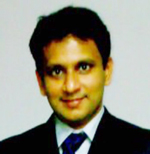 Dr Anil Shetty is a Professor of Pediatrics at Father Muller Medical College, Mangalore. He is an avid chronicler of Mangalore’s past.
Dr Anil Shetty is a Professor of Pediatrics at Father Muller Medical College, Mangalore. He is an avid chronicler of Mangalore’s past.
- Need For ‚ÄėStudents, Alcohol and Drugs‚Äô survey
- New Synthetic Drugs Trapping Youth
- Mood Modifying Chips - Future of Drug Use
- Ramping up Indo-Bangla border security
- IITM- A premier educational Institution in a forest. What can we learn?
- Former PM, Manmohan Singh: Notable laws passed under his tenure
- Hashish on Ratnagiri Seashore
- The Poor cry out to Us: Do we respond?
- Clandestine Meth Labs Sprouting Across India
- Hydro ganja from Bangkok latest craze among youth in India
- "Memories to Treasure" Dr.Michael Lobo’s new book
- Dominance of Private Universities: Will it make education inaccessible to underprivileged students?
- Monti Phest: A rich heritage of South Canara
- Kashmir Bhavan in Bengaluru: A must visit place
- "MAI and I" Book of Angelic Emotions
- Draupadi Murmu - The New ’President of India’
- Anthony Ashram in the city grows a classic museum
- First College of Fisheries in India - A Golden Jubilarian
- Flushing Meadows - A Vintage Mansion
- The Colonelís Bequest
- A Mangalorean PM and his RBI Governor Brother: The Extraordinary story of the Benegal Brothers
- There is no higher religion than Truth: Theosophical Society
- Líaffaire - Ashu & Yiju of Mangalore
- Mangalore in Kowloon
- 1568 to 2018 AD: 450 years of Christianity in Mangaluru
- Vice President elect Naidu moves on from nadir to zenith, the phenomenal journey
- Embracing the Outdoors: How Heated Jackets Are Revolutionizing Cold Weather Activities
- Efficient and Sustainable Packaging Solutions with FIBCs
- The Hybrid Kilt Revolution | Where Tradition Gets Trendy
- Affordable Elegance | Embrace Style on a Budget with Cheap Kilts
- Unleashing Style and Functionality | Exploring Tactical Kilts
- Mangalore’s Heroic Lady marks 105th Birthday
- Santa the Christmas spirit
- Geriatric care: Mangalore strikes a fine balance
- The Don Who Made Two Empires to Clash
- CHITRAPUR SARASWATS - A Great Kanara Community
- Our new President Ram Nath Kovind’s significant journey to Rashtrapathi Bhavan
- Marriages made in heaven, big fat weddings made in India
- Eid insight - The giver of glad tidings
| Comments on this Article | |
| Nestor Dcosta, kadri | Sun, April-14-2019, 9:30 |
| nice to read this article. will surely take my daughter there and show her the museum . | |
| Beena Shetty, Mangalore | Sun, April-7-2019, 8:34 |
| Great article Anil. Congratulations | |
- CITY INFORMATION
- TRAVEL
- TOURIST INFORMATION
- HEALTH CARE
- MISCELLANEOUS




 Write Comment
Write Comment E-Mail To a Friend
E-Mail To a Friend Facebook
Facebook Twitter
Twitter  Print
Print 


